Dawon (Traditional Tea Garden) (전통다원)
9.0Km 2020-02-20
11-4, Insadong 10-gil, Jongno-gu, Seoul
+82-2-730-6305
Dawon is a tea house that operates in a hanok (traditional Korean house). Located in the busy tourist area of Insa-dong, this place offers the visitors a moment to relax and find peace in the city. When seated, greenery and flowers in the private garden make for a nice view while sipping tea and snacking on Korean desserts like assorted ttoek (rice cakes). There are many teas available, with more than 15 varieties, all of which originate from Korea. Dawon's peaceful atmosphere and authentic experience make it a must visit for anyone in the Insa-dong area.
Gaeseong Mandu Koong (개성만두 궁)
9.0Km 2021-03-24
11-3, Insadong 10-gil, Jongno-gu, Seoul
+82-2-733-9240
Gaeseong Mandu Koong has served Gaeseong-style mandu (dumplings) for more than 30 years. The elderly proprietor, who fled south during the Korean War runs this restaurant with the help of her granddaughters. Characterized by its delicate taste, Gaeseong mandu stuffing consists of pork and various vegetables such as Chinese cabbage and pumpkin. This restaurant's mandu is so popular that it sometimes gets sold out even before evening. Typical menu includes mandu-jeongol (hot pot) and mandu-guk (soup). The hot pot is made of various ingredients including mandu, rice cakes, mushrooms, and meat, and serves two to three persons. For several persons, it's recommended to eat bossam (boiled meat slices wrapped in lettuce leaves or kimchi) and Korean-style pancakes.
Yonggeumok (용금옥)
9.0Km 2020-06-09
24-2, Dadong-gil, Jung-gu, Seoul
+82-2-777-1689
Yonggeumok's specialized stew includes tofu, fried tofu, spring onion, onion, oyster mushroom, tree ear mushroom, and other condiments added to broth boiled with lamb and its intestines overnight. Pre-cooked loaches are added in the end, creating a spicy yet savory flavor with chewy texture (loaches can be ground upon request). The restaurant serves Gyeongsang-do style, Jeolla-do style and Seoul-style chueo tang (loach stew).
Residencia Real Unhyeongung en Seúl (서울 운현궁)
9.0Km 2021-11-29
Samil-daero 464, Jongno-gu, Seúl
Es un patrimonio cultural, designado Sitio Histórico, ubicado en Unni-dong, Jongno-gu. Antigüamente no era un palacio como lo es el de Gyeongbokgung, sino que se trataba de la residencia de los miembros de la Familia Real, pero con el paso del tiempo se lo ha considerado como un palacio. La denominación en coreano del palacio Gyeongbokgung sería “Gunggwol”. El término “Gung” hace referencia al espacio de residencia, mientras que la palabra “Gwol” se refiere al espacio político. Esto significa que en Gyeongbokgung se llevaba a cabo la vida cotidiana y política de la Corte Real; pero en Unhyeongung residía la Familia Real de Heungseon Daewongun, regente y padre del rey Gojong. Cabe señalar que hacia finales de la época Joseon, en esta residencia real se han originado la mayoría de los sucesos históricos, políticas revolucionarias, política de aislamiento, etc., todo lo cual resalta su simbolismo histórico.
La construcción para ampliar el palacio Unhyeongung comenzó a un mes de que Gojong asumiera el trono, a petición de la madre del Rey. En un principio, se encontraba localizado en el área intermedia entre los palacios Changdeokgung y Gyeongbokgung, pero a medida que se fue extendiendo, con una cantidad de edificaciones anexas, ha abarcado la zona actual que corresponde a la Universidad femenina de Duksung, el antiguo edificio de la emisora TBC, el Centro Cultural Japonés, la Escuela primaria Gyodong y el edificio de la compañía Samwhan.
El edificio principal de Unhyeongung es la sala Noandang, construida en septiembre de 1864. Entre otras construcciones famosas se destacan Norakdang, Irodang, y las cuatro puertas de acceso al palacio, aunque en la actualidad ha quedado una sola puerta. Norakdang, siendo la edificación central del palacio, fue el escenario de los grandes festivos familiares, y Noandang fue el despacho de Daewongun, la construcción más significativa en la vida de este hombre, ya que fue el lugar en donde pasó los momentos más importantes de su vida y donde falleció. Presenta un estilo arquitectónico tradicional coreano, con tejado, cuyos extremos estaban decorados elegantemente. Irodang, situado al lado Norakdang, tiene la forma de un cuadrado, y en su interior se encuentra un hermoso jardín. Este lugar ha recibido la atención y el cuidado solo durante el período de regencia de Heungseon Daewongun, ya que luego de su muerte, fue difícil el mantenimiento. La residencia ha tomado la apariencia actual a partir de noviembre de 1993, que es cuando el gobierno de Seúl tomó posesión del establecimiento, y por lo cual, ejecutó las obras de remodelación y restauración.
Imun Seolnongtang (이문설농탕)
9.0Km 2025-07-18
38-13, Ujeongguk-ro, Jongno-gu, Seoul
Samseong Bbalgan Yangnyeom Sutbulgui (삼성 빨간양념 숯불구이)
9.0Km 2020-06-16
37, Namdaemun-ro 1-gil, Jung-gu, Seoul
+82-2-752-6449
Samseong Bbalgan Yangnyeomg has been famous for its charcoal-grilled dishes since 1972, and is especially well known for its spicy seasoning made from powdered red pepper, garlic, and ginger. Pork is mixed with the seasoning, giving it the characteristic red color and unique flavor, and then grilled over hot coals. This is the perfect restaurant for spicy food-lovers or those looking for a challenge.
Other dishes include jumulleok (marinated pork) and donggeurangttaeng (batter-fried meatballs). Jumulleok is made by seasoning fresh meat, whereas donggeurangttaeng is made by cutting the frozen meat into small pieces, and then marinating it. Older adults usually prefer jumulleok, while the young prefer donggeurangttaeng.
Foro de Distribución de Alimentos de Seúl (K-Food Show) (서울식품유통대전(K푸드쇼))
9.0Km 2025-06-09
Eulji-ro Jiha 12, Jung-gu, Seúl
02-6965-0055
Dubu KiTCHEN (두부키친)
9.0Km 2021-03-19
310, Wiryegwangjang-ro, Sujeong-gu, Seongnam-si, Gyeonggi-do
+82-31-723-7921
This is a Korean cuisine located in Seongnam-si, Gyeonggi-do. The representative menu is spicy seafood and soft bean curd stew. It is a spicy stew made with seafood and soft tofu.
Insadong Sagwanamu (인사동사과나무)
9.0Km 2021-03-29
24-1, Insadong 14-gil, Jongno-gu, Seoul
+82-2-722-5051
This is where you can dine on the outdoor terrace. This restaurant's signature menu is steak. This Western dishes restaurant is located in Jongno-gu, Seoul.
Vegetarian Restaurant Osegyehyang (채식요리전문점 오세계향)
9.0Km 2019-12-23
14-5 Insadong 12-gil, Jongno-gu, Seoul
+82-2-735-7171
Osegyehyang is a vegetarian restaurant location in Insa-dong, a street known for its traditional culture and crafts. It serves various dishes that cater to the needs of vegetarian customers.
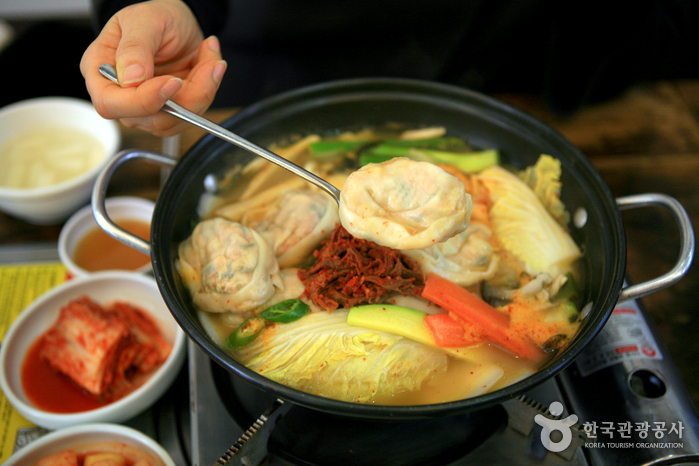
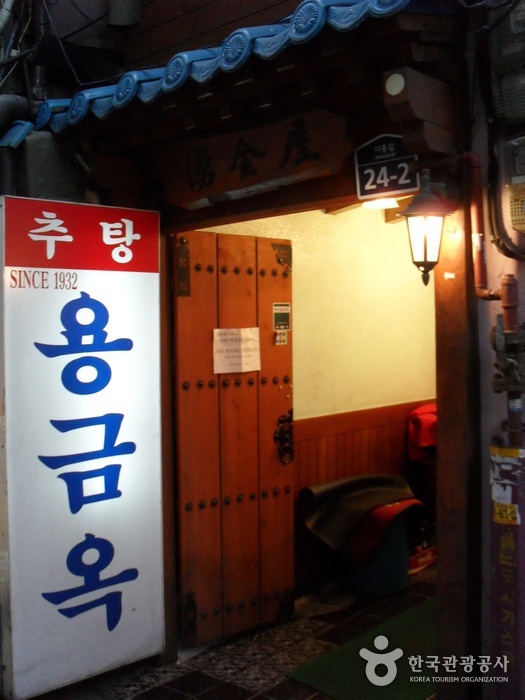


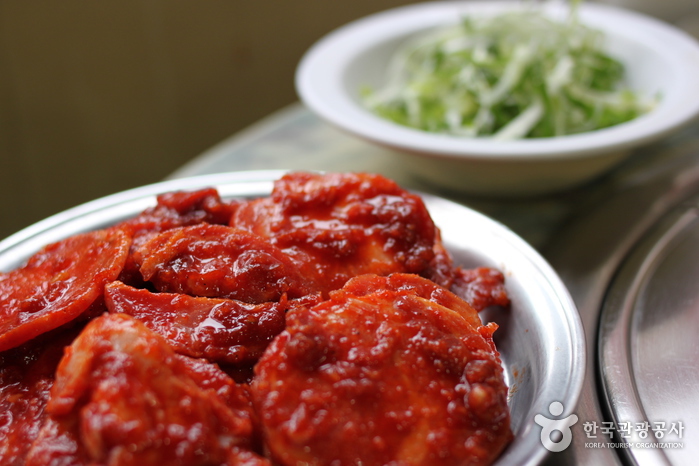

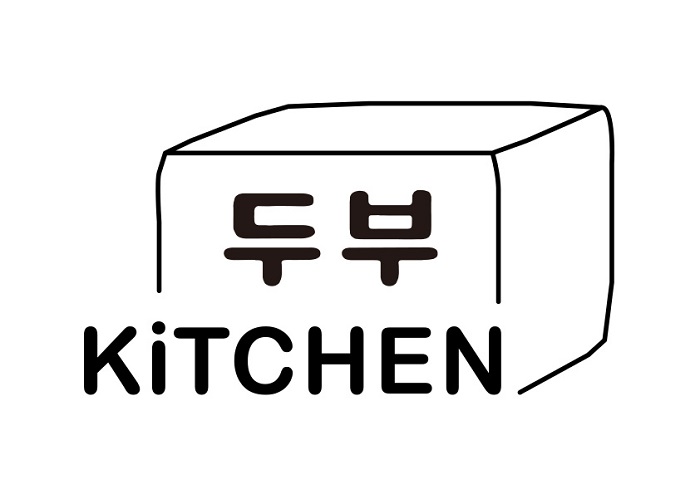

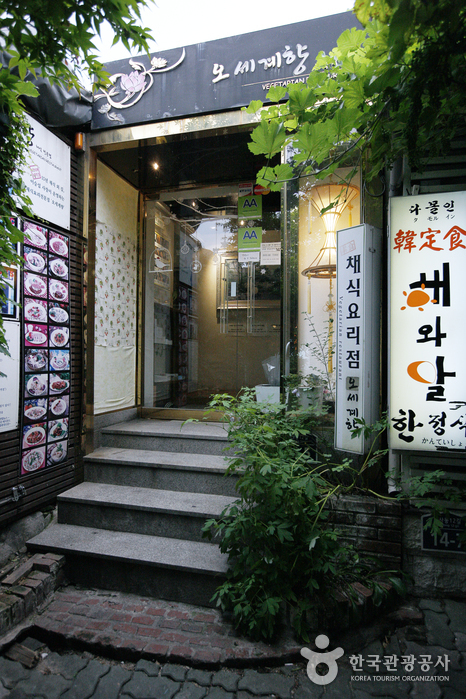
 Español
Español
 한국어
한국어 English
English 日本語
日本語 中文(简体)
中文(简体) Deutsch
Deutsch Français
Français Русский
Русский